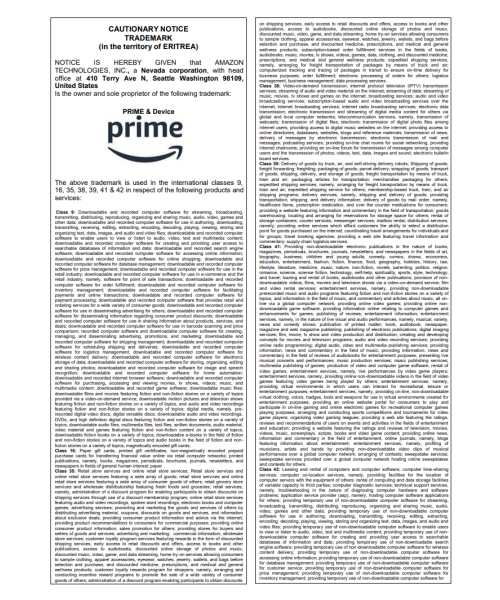Trademark Registration Eritrea
Eritrea gained independence from its southern neighbor Ethiopia on May 24, 1993. Since then, the government has been busy establishing and maintaining a functioning government structure, securing development funds, and dealing with a border conflict with Ethiopia. A trade register was established at an early stage for the registration of trade names and marks of licensed traders operating in Eritrea. No provisions are made for such registrations by non-Eritrean companies. The enactment of a law on industrial property and the establishment of a separate office for industrial property are currently under consideration, and there are currently no laws on industrial property in Eritrea. The government has occasionally accepted the publication of warning notices in the state-owned national newspaper, but this practice is currently suspended. There is currently no procedure for the protection of trademarks in Eritrea.
| Flat fee incl. official fees | Yes |
|---|---|
| Classes included | 1 |
| Multiple classes possible | no classification required |
| Protection Period (years) | n.a. |
| International Registration possible | No |
| Power of Attorney must be notarized | No |
| Legal Advice | Yes |
| Process Duration (est. in months) | 1 |
Trademark Registration in Eritrea
With this assignment you can order a cautionary notice for trademark protection in Eritrea. We will take care of everything that is necessary for the professional preparation of the trademark protection in Eritrea, submission of the trademark cautionary notice in Eritrea and send a report to you.
The price for trademark registration in Eritrea includes our professional fees as well as the official fees.
Trademark Law in Eritrea
Due to the existing administrative problems at the Eritrea Patent & Trademark Office, still the patent department is not functional.
There is no legislation that provides for the protection of trademarks the Eritrea. Trademark protection is acquired by sufficient public recognition.
The measure of protection in practice is by publishing cautionary notices at regular intervals in local Arabic/English newspapers, thereby claiming ownership of the patent and warning third parties against infringement. Such notices have legal value when submitted to the Courts in the event of infringement.
Information required for Cautionary Notice in Eritrea:
• Patent's title
• Patentee's name
• Address and nationality
• Inventors' names
• Claims
• Priority claims
• Abstracts
• Specifications
Classification
As there is no method for protecting trademarks in the Eritrea, there is no classification system used.
Trademark Protection Procedure in Eritrea
Protection of trade marks is only acquired by way of common law, i.e., by publishing cautionary notice in the leading newspaper. A cautionary notice may be published for multiple-classes or separate cautionary notices may also be published for each class.
An application can include goods or services in any number of classes, but with additional charges (publication fees with the newspaper company) for each additional class.
Timeframe
This entire process of acquiring trademark protection by Publishing a cautionary notice may take approximately 3 to 4 weeks time.
National Opposition Period
By publishing a cautionary notice in the leading newspaper in Eritrea as per common law, the public at large are made aware of the sole ownership/proprietorship on the mark and in case of any infringement, the same may be brought to the notice of the Court.
Duration
Since there is no trademark law in the Eritrea, protection of trademarks is only by way of common law, i.e., by publishing a cautionary notice in the leading newspaper. Therefore, there is no provision for renewal of the mark. However, it is recommended that the cautionary notice(s) be re-published every two to three years.



